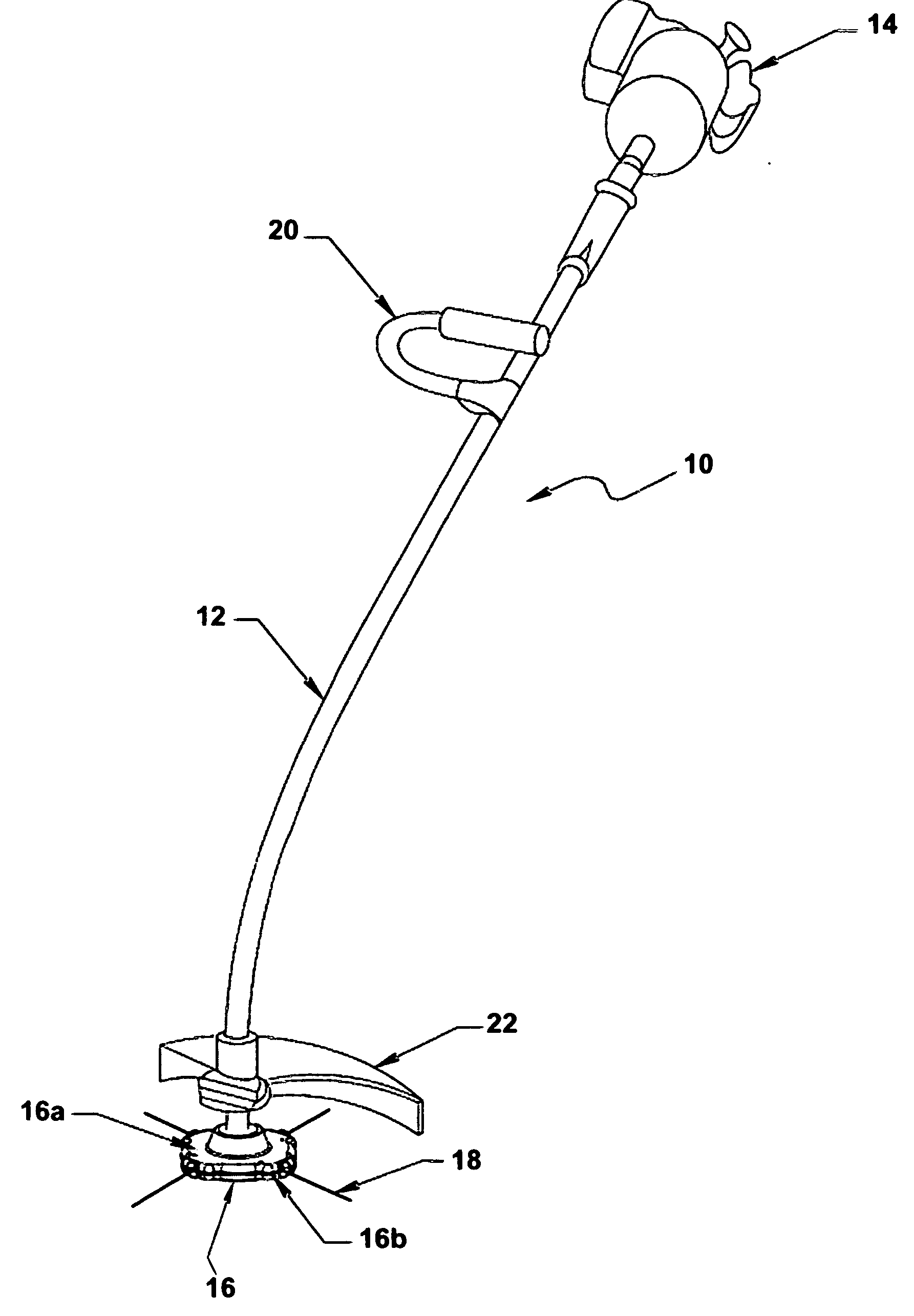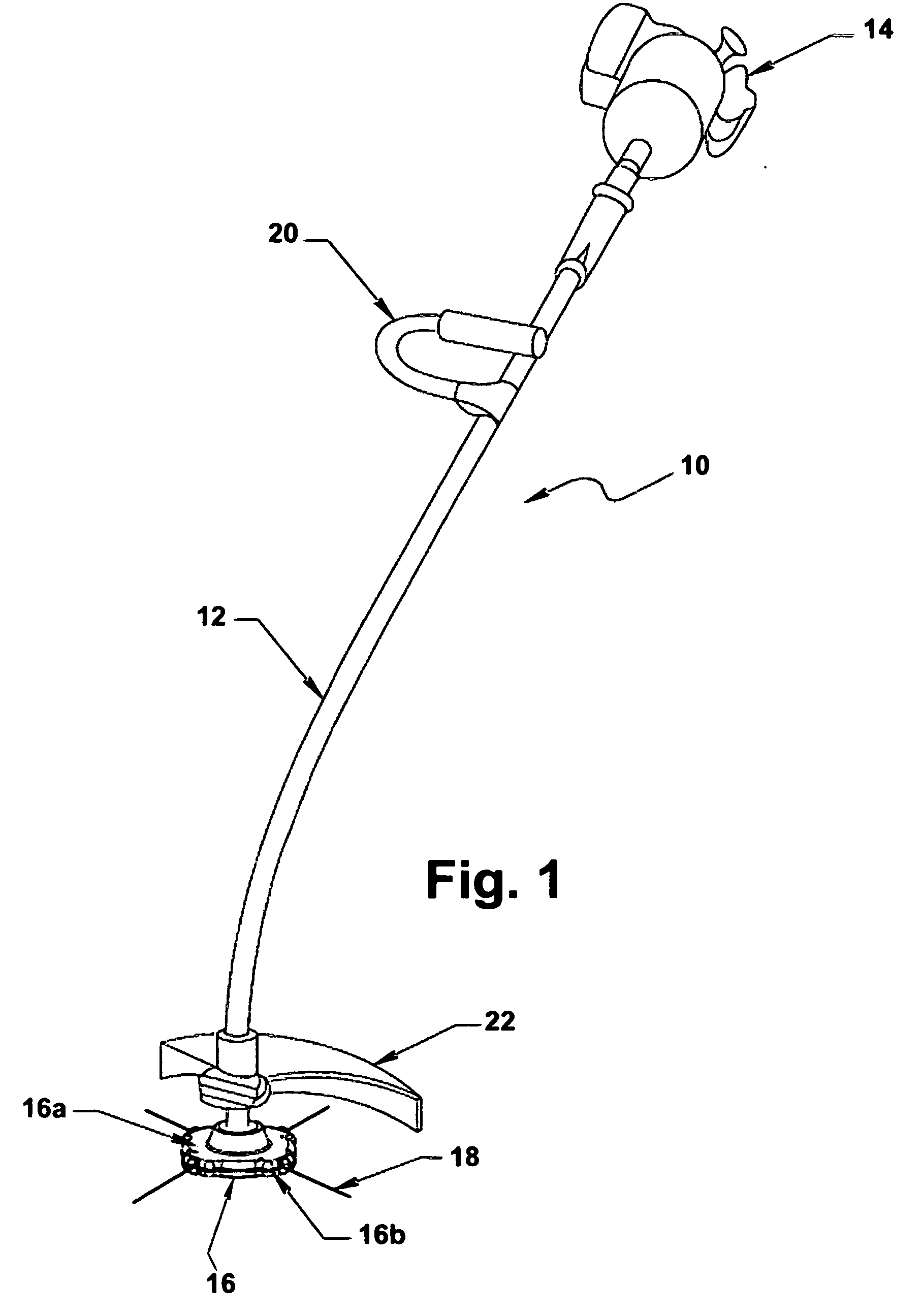Vegetation trimmer apparatus
a technology of vegetable trimming and trimmer, which is applied in the field of vegetable trimming apparatus, can solve the problems of increasing affecting the service life of the blade, and affecting the service life of the trimmer, so as to reduce the likelihood of seizure or failure, reduce the waste of the trimmer line, and facilitate the loading and unloading
- Summary
- Abstract
- Description
- Claims
- Application Information
AI Technical Summary
Benefits of technology
Problems solved by technology
Method used
Image
Examples
Embodiment Construction
[0024] Referring to the drawings wherein like or similar references indicate like or similar elements throughout the several views, there is shown in FIG. 1 a typical motorized vegetation trimmer apparatus 10. Apparatus 10 comprises an elongate main handle 12 which to which is connected an internal combustion or electric motor 14 that rotatably drives a trimmer head 16 located at a distal end of the handle. Trimmer head 16 carries one or more radially outwardly projecting cutting means 18 which cut the vegetation as the trimmer head rotates. Preferably, trimmer apparatus 10 includes a steering handle 20 attached to the main handle 12 to facilitate guidance of the apparatus during operation. A shield 22 is also desirably provided for the operator's safety.
[0025] Referring to FIG. 2 there is shown a conventional fixed line trimmer head 16 that is used for cutting vegetation in conjunction with an internal combustion or electric powered trimmer apparatus such as apparatus 10 shown in ...
PUM
 Login to View More
Login to View More Abstract
Description
Claims
Application Information
 Login to View More
Login to View More - R&D
- Intellectual Property
- Life Sciences
- Materials
- Tech Scout
- Unparalleled Data Quality
- Higher Quality Content
- 60% Fewer Hallucinations
Browse by: Latest US Patents, China's latest patents, Technical Efficacy Thesaurus, Application Domain, Technology Topic, Popular Technical Reports.
© 2025 PatSnap. All rights reserved.Legal|Privacy policy|Modern Slavery Act Transparency Statement|Sitemap|About US| Contact US: help@patsnap.com



